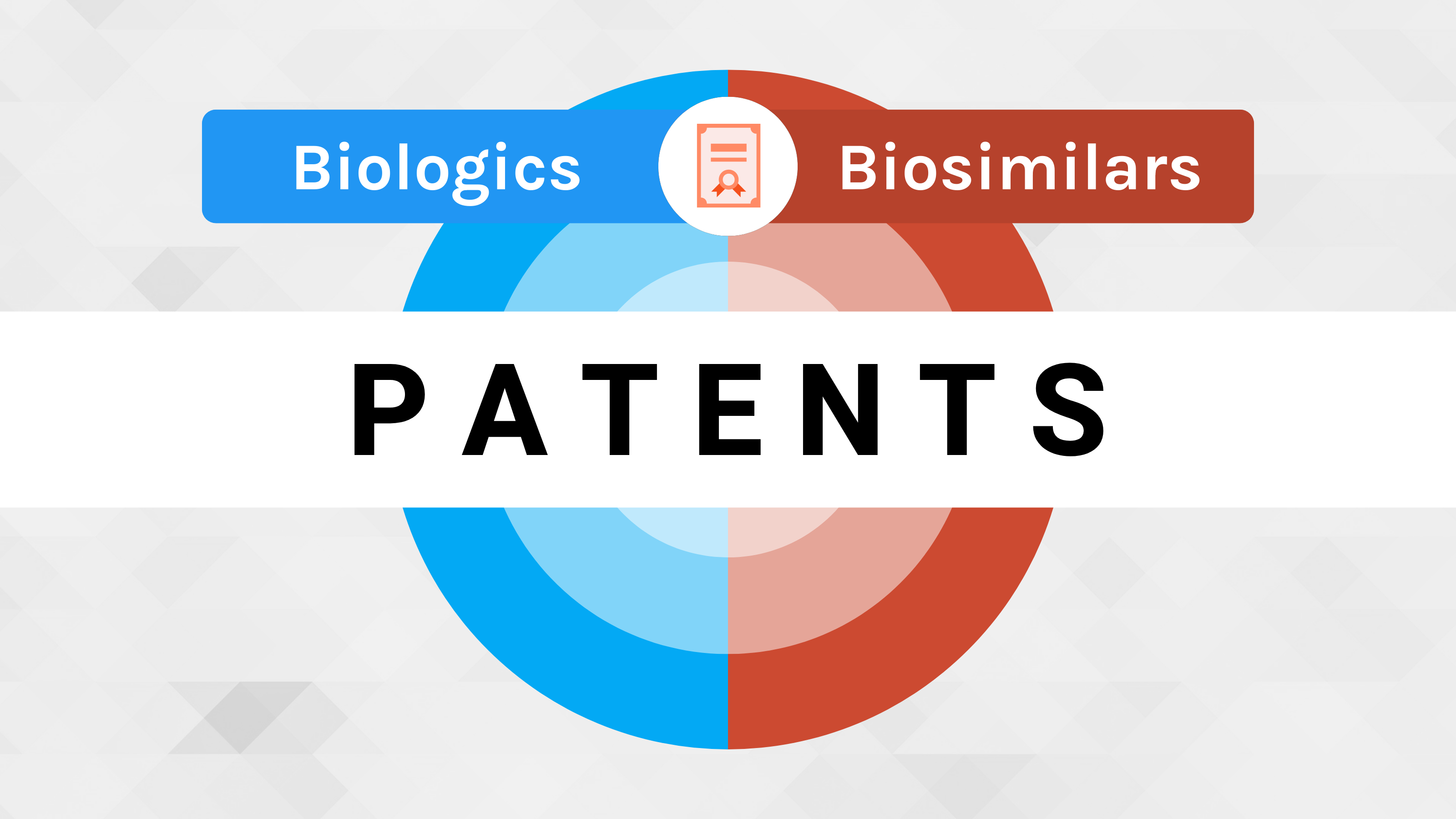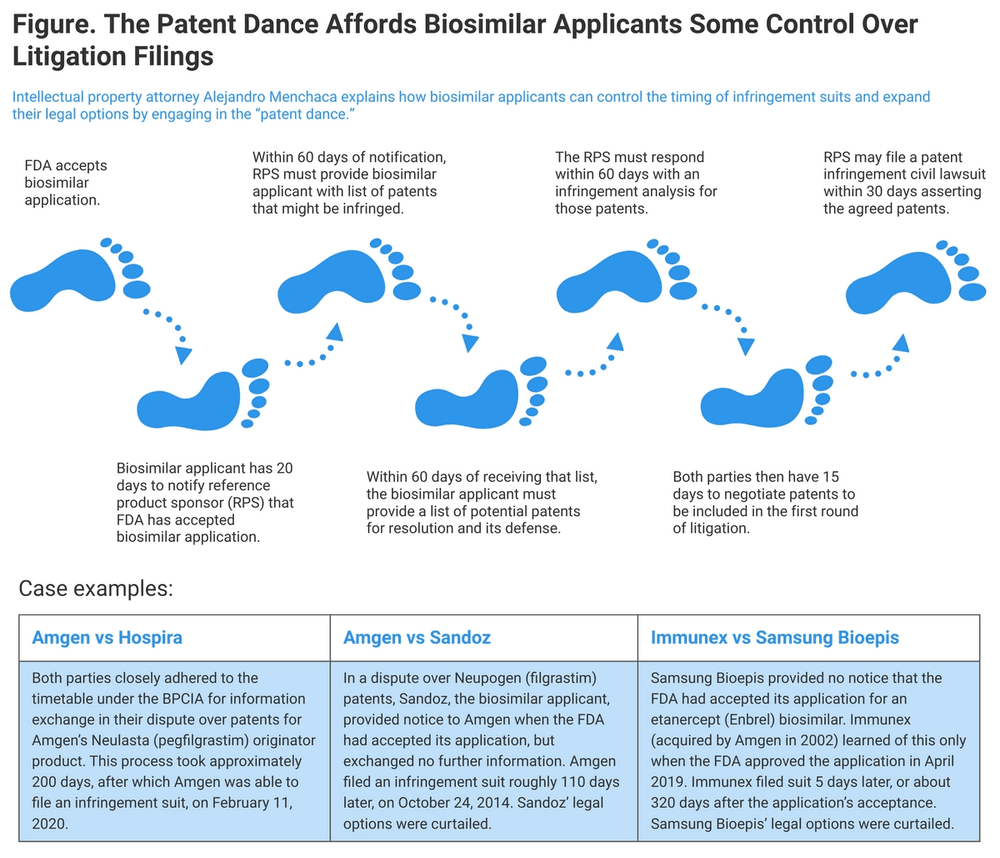The goal is to deal with an advance notice problem and give some relief to biosimilar companies, who could genuinely say that it’s hard to get an advance perspective on which patents they have to deal with 5 years from now if they keep popping out of the system.
- Bone Health
- Immunology
- Hematology
- Respiratory
- Dermatology
- Diabetes
- Gastroenterology
- Neurology
- Oncology
- Ophthalmology
- Rare Disease
- Rheumatology
BIO Attorneys Discuss the BPCIA Patent Dance
The “patent dance” under the Biologics Price Competition and Innovation Act (BPCIA) is meant to resolve litigation efficiently, and it does, although in practice biosimilar developers and originator companies may not completely adhere to the prescribed steps, according to Biotechnology Innovation Organization (BIO) experts.
How useful is the “patent dance” under the Biologics Price Competition and Innovation Act (BPCIA) for resolving patent disputes and speeding biosimilars to market? It’s more of a pointer for heading biosimilar and originator product companies in the direction of settling their disagreements over intellectual property (IP), said IP attorneys from the Biotechnology Innovation Organization (BIO), a Washington, DC–based trade association.
The patent dance is a part of the biosimilar approval pathway that allows both the originator company and the biosimilar company to exchange information relevant to the patents on the reference product that might be infringed by marketing of the proposed biosimilar.
The patent dance is intended to streamline and formalize the exchange of information and cut down on wasteful litigation that might delay the introduction of cost-saving biosimilars. The multistep process of the patent dance is carefully marked out like footprint stickers in a dance academy (Figure), but in fact, there’s a lot of improvisation.
“Almost everybody says that some part of the patent dance wasn’t complied with by the biosimilar applicant,” said Hans Sauer, deputy general counsel and vice president for intellectual property at BIO. “A fair number of them just refused to participate or started participating and then stopped.”
This isn’t necessarily a problem for getting biosimilars to market, he said. Almost half of the biosimilars currently on the market launched “at risk” of litigation over alleged patent infringements, according to BIO research. “It doesn’t actually really seem to be a problem for the system,” Sauer said.
In a 2017 decision, the US Supreme Court ruled that a biosimilar applicant doesn’t have to comply with the steps of the patent dance as laid out in the BPCIA. The decision concerned a lawsuit filed by Amgen that contended Sandoz did not provide information in accord with patent dance requirements about its proposed filgrastim biosimilar (Zarxio), referencing Amgen’s Neupogen originator product.
“The Supreme Court said the way the legislation is drafted, it’s up to the biosimilar applicant and what they want to do. They don’t have to complete the patent dance, and that’s what we’re seeing. It just depends on the applicant and their particular assessment of their business,” Sauer said.
Biosimilar companies rarely will not start the patent dance process, but they either grudgingly go through all the steps or start out and then say, “We know enough. We’ll just go straight to a plain vanilla patent litigation,” Sauer said.
Patent Dance Is a Guideline
Melissa Brand, former assistant general counsel for Intellectual Property for BIO, interpreted the Supreme Court’s decision in the Amgen vs Sandoz case as meaning that the BPCIA patent dance is essentially a guideline, but litigants are sophisticated enough to decide for themselves how to resolve patent disputes. “If a biosimilar company doesn’t want the benefits and advantages of using the patent dance, it’s up to them,” she said.
The challenge for biosimilar companies is knowing what patents could really block them from coming to market and which are relatively insubstantial. This problem can be exacerbated by originator companies that continue to file patents on products long after they have been approved. This has the potential to frustrate biosimilar developers who can’t accurately predict what aspects of product development are going to be patent protected.
Senator John Cornyn, R-Texas, has introduced legislation that would limit the number of patents a manufacturer can assert during the patent dance. “This will help deter branded manufacturers of biologics from gaming the system to increase the number of patents they assert, while preserving the incentives provided by the patent system to encourage the core innovation that produces new biologic treatments in the first place,” Cornyn said in a statement.
“One of the things that Cornyn heard was that as biosimilar companies started developing their products and going through product development decisions, patents come out of the system too late for them to change the decisions they’ve already made and spent money on. That presents problems,” Brand said.
“The goal is to deal with an advance notice problem and give some relief to biosimilar companies, who could genuinely say that it’s hard to get an advance perspective on which patents they have to deal with 5 years from now if they keep popping out of the system,” she said.
For Sauer and Brand, who have argued that the patent system is not stacked against biosimilar developers and that biosimilars are in general reaching the marketplace without undue hindrance, the Cornyn bill is “a reasonable piece of legislation.”
In the first part of this series, Sauer and Brand discussed patent thickets and whether they are the obstacles to biosimilar development and marketing that they are made out to be; and in the second part of this series, the IP attorneys noted that patent protections vary by type of patent.
President Trump Signs Executive Order to Bring Down Drug Prices
April 16th 2025To help bring down sky-high drug prices, President Donald Trump signed an executive order pushing for faster biosimilar development, more transparency, and tougher rules on pharmacy benefit managers—aiming to save billions and make meds more affordable for everyone.
Will the FTC Be More PBM-Friendly Under a Second Trump Administration?
February 23rd 2025On this episode of Not So Different, we explore the Federal Trade Commission’s (FTC) second interim report on pharmacy benefit managers (PBMs) with Joe Wisniewski from Turquoise Health, discussing key issues like preferential reimbursement, drug pricing transparency, biosimilars, shifting regulations, and how a second Trump administration could reshape PBM practices.
Experts Pressure Congress to Remove Roadblocks for Biosimilars
April 12th 2025Lawmakers and expert witnesses emphasized the potential of biosimilars to lower health care costs by overcoming barriers like pharmacy benefit manager practices, limited awareness, and regulatory delays to improve access and competition in chronic disease management during a recent congressional hearing.
Decoding the Patent Puzzle: Navigating the Legal Landscape of Biosimilars
March 17th 2024On this episode of Not So Different, Ha Kung Wong, JD, an intellectual patent attorney and partner at Venable LLP, details the confusing landscape that is the US patent system and how it can be improved to help companies overcome barriers to biosimilar competition.
Review Calls for Path to Global Harmonization of Biosimilar Development Regulations
March 17th 2025Global biosimilar regulatory harmonization will be needed to reduce development costs and improve patient access, despite challenges posed by differing national requirements and regulatory frameworks, according to review authors.
Biosimilar Cases to Watch: Prolia/Xgeva and Denosumab Competitors
March 11th 2025The denosumab biosimilar market is poised for disruption with 3 FDA-approved biosimilars, at least 5 awaiting approval, and launches anticipated to start in May 2025, while ongoing patent litigation continues to shape the competitive landscape.


